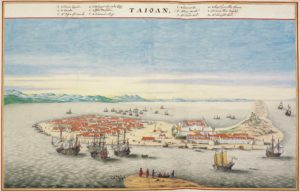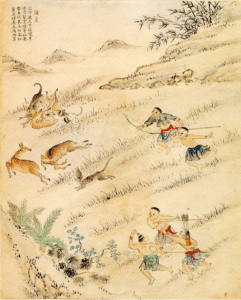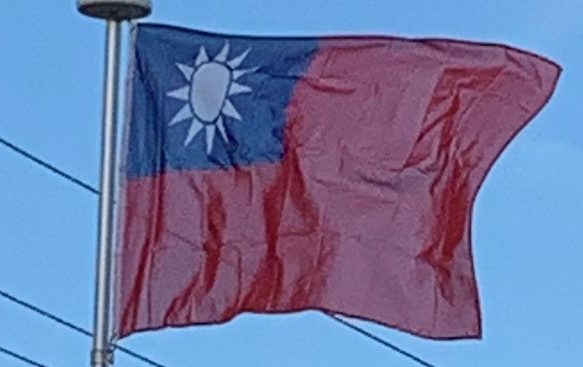
In 1626, the Spanish Empire landed on and occupied northern Taiwan, at the ports of Keelung and Tamsui, as a base to extend their trading. This colony lasted 16 years until 1642, when the last Spanish fortress fell to Dutch forces.
Following the fall of the Ming dynasty, Koxinga (Zheng Chenggong), a self-styled Ming loyalist, arrived on the island and captured Fort Zeelandia in 1662, expelling the Dutch Empire and military from the island. Koxinga established the Kingdom of Tungning (1662–1683), with his capital at Tainan. He and his heirs, Zheng Jing, who ruled from 1662 to 1682, and Zheng Keshuang, who ruled less than a year, continued to launch raids on the southeast coast of mainland China well into the Qing dynasty era.
Qing Rule:
In 1683, following the defeat of Koxinga’s grandson by an armada led by Admiral Shi Lang of southern Fujian, the Qing dynasty formally annexed Taiwan, placing it under the jurisdiction of Fujian province. The Qing imperial government tried to reduce piracy and vagrancy in the area, issuing a series of edicts to manage immigration and respect aboriginal land rights. Immigrants mostly from southern Fujian continued to enter Taiwan. The border between taxpaying lands and what was considered “savage” lands shifted eastward, with some aborigines becoming sinicized while others retreated into the mountains. During this time, there were a number of conflicts between different ethnic groups of Han Chinese, Quanzhou Minnanese feuding with Zhangzhou and Hakkas peasants, and major clan fights between Minnans (Hoklos), Hakkas and aborigines too.

Northern Taiwan and the Penghu Islands were the scene of subsidiary campaigns in the Sino-French War (August 1884 to April 1885). The French occupied Keelung on 1 October 1884, but were repulsed from Tamsui a few days later. The French won some tactical victories but were unable to exploit them, and the Keelung Campaign ended in stalemate. The Pescadores Campaign, beginning on 31 March 1885, was a French victory, but had no long-term consequences. The French evacuated both Keelung and the Penghu archipelago after the end of the war.
In 1887, the Qing upgraded the island’s administration from being the Taiwan Prefecture of Fujian Province to Fujian-Taiwan-Province, the twentieth in the empire, with its capital at Taipei. This was accompanied by a modernization drive that included building China’s first railway.
Japanese Rule:
As the Qing dynasty was defeated in the First Sino-Japanese War (1894–1895), Taiwan, along with Penghu and Liaodong Peninsula, were ceded in full sovereignty to the Empire of Japan by the Treaty of Shimonoseki. Inhabitants on Taiwan and Penghu wishing to remain Qing subjects were given a two-year grace period to sell their property and move to mainland China. Very few Taiwanese saw this as feasible. On 25 May 1895, a group of pro-Qing high officials proclaimed the Republic of Formosa to resist impending Japanese rule. Japanese forces entered the capital at Tainan and quelled this resistance on 21 October 1895. Guerrilla fighting continued periodically until about 1902 and ultimately took the lives of 14,000 Taiwanese, or 0.5% of the population. Several subsequent rebellions against the Japanese (the Beipu uprising of 1907, the Tapani incident of 1915, and the Musha incident of 1930) were all unsuccessful but demonstrated opposition to Japanese colonial rule.
